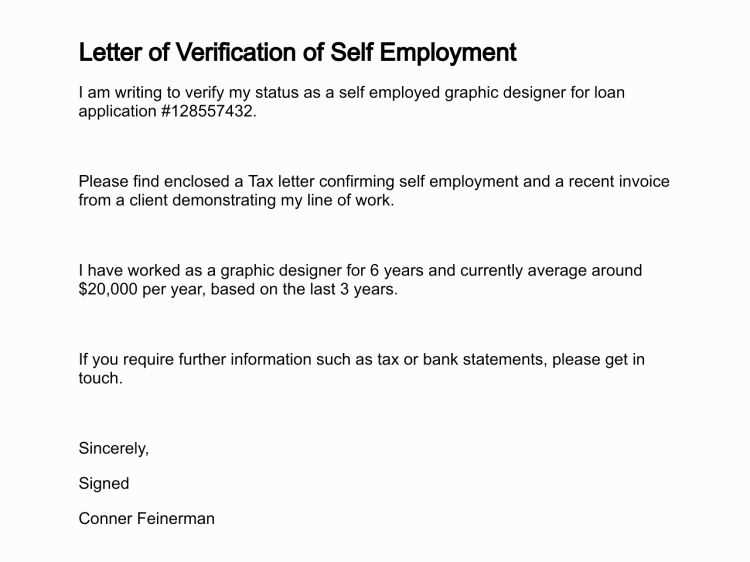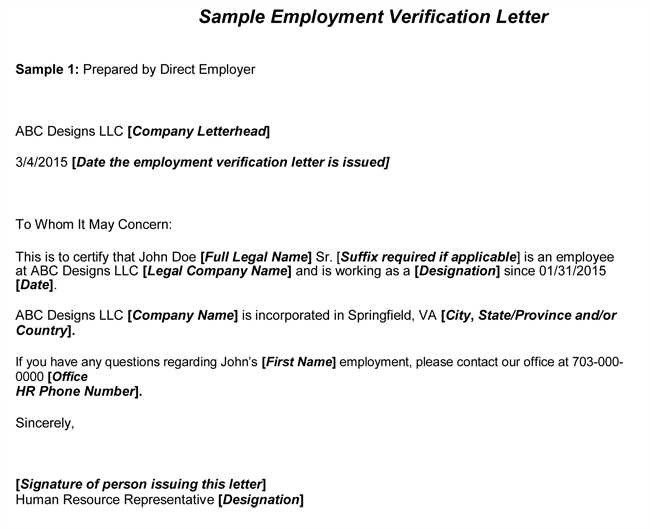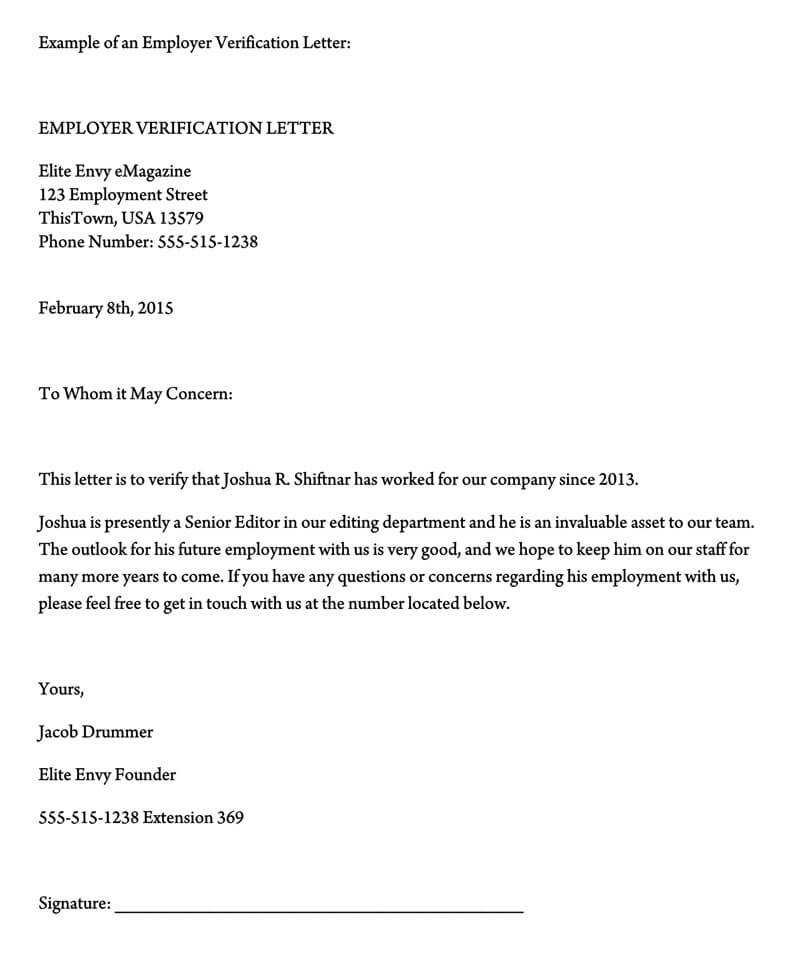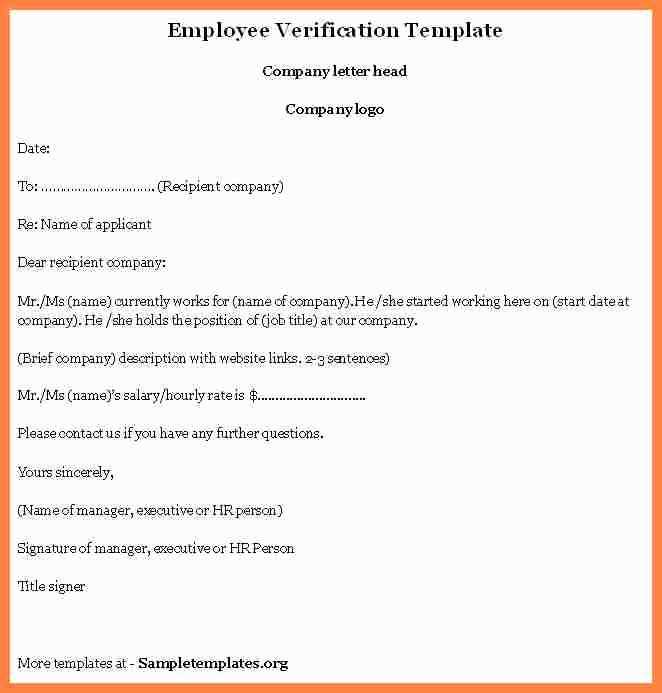Letter Template for Employment Verification

When confirming an individual’s professional background or role within an organization, a well-structured document is crucial. This official statement provides the necessary details and reassures any party requesting the information. It serves as proof of the person’s position and employment duration, offering a clear, concise overview of their job history.
Essential Information to Include

The key elements of a verification note are straightforward yet significant. It should provide specific facts that clarify the person’s status and role. The document must be formal and contain the following:
- Name of the person being confirmed.
- Job Title and main responsibilities.
- Dates of employment, including start and end dates.
- Employer details, including company name and contact information.
Crafting the Right Format

To ensure clarity and professionalism, follow a simple yet formal format. Begin with a header that includes the company’s details and the date. Follow with a brief introduction explaining the purpose of the document. Include the person’s professional details, then conclude with a statement verifying the authenticity of the provided information.
Customizing the Document for Various Requests
Depending on the recipient’s needs, you may have to tailor the content. If the verification is meant for a mortgage application, include specific details about the person’s salary and position. For legal matters, ensure the document contains comprehensive data that can serve as evidence in court. Each context requires a slightly different approach, but the core details remain the same.
Avoiding Common Errors
It’s important to prevent common mistakes that may lead to confusion. Make sure the information is accurate and up-to-date. Double-check for any spelling errors, especially in names or dates, as they can cause issues for both the person being verified and the requesting party. Avoid excessive details that are unnecessary, as this can dilute the clarity of the message.
Legal Considerations
While providing confirmation of someone’s role is often routine, always remember that legal implications can arise. Ensure that all details are truthful and that the document is signed by an authorized individual in the organization. Unauthorized verification can have serious consequences, so take care to maintain the document’s integrity.
Understanding Professional Confirmation Documents

When an individual’s role or history within a company needs to be confirmed, a formal written statement is often required. This document provides clarity, offering proof of a person’s position, duration, and other pertinent details related to their job. It serves as a critical tool in various situations, ensuring transparency and trust in the provided information.
Key Components of a Confirmation Statement
A proper confirmation document should contain essential facts that verify the individual’s employment details. The most important elements include the person’s name, position, and dates of employment. Additionally, it is crucial to include the company’s information, ensuring the document is traceable and valid. By keeping the content clear and concise, the recipient can easily assess the validity of the claims.
Steps to Create a Professional Document
Crafting a professional verification requires following a clear structure. Start by stating the purpose of the document and introducing the individual. Next, outline their role, responsibilities, and tenure at the organization. Conclude with a formal statement confirming the details. Ensure the language remains formal, and the content is factual, as this reflects the authenticity of the document.
Common Errors to Avoid in Documents
Accuracy is key when drafting such documents. Common errors include misspelled names, incorrect dates, or outdated information. These mistakes can undermine the credibility of the document. Furthermore, overloading the statement with irrelevant details can dilute its purpose, making it harder for the reader to extract the necessary information.
Adapting Documents for Different Roles
Depending on the context in which the document is used, you may need to tailor the content. For example, mortgage applications require information about the individual’s salary, while legal situations may need more detailed information regarding their position and responsibilities. Always adjust the content to meet the specific needs of the recipient, while maintaining the essential facts.
Legal Aspects of Job Confirmation
While drafting such documents is typically straightforward, there are legal considerations. It is important to ensure the details are truthful and that the document is signed by an authorized individual within the company. Misrepresenting information in these types of documents can lead to serious legal consequences, which is why it is crucial to maintain accuracy and integrity.
How to Submit a Confirmation Statement
Submission methods can vary depending on the requirements of the requesting party. Some may ask for a physical copy, while others may prefer an electronic version. Be sure to follow the submission guidelines carefully, ensuring that the document reaches the intended recipient in the required format. Keep a record of the submission, as this serves as proof of compliance.